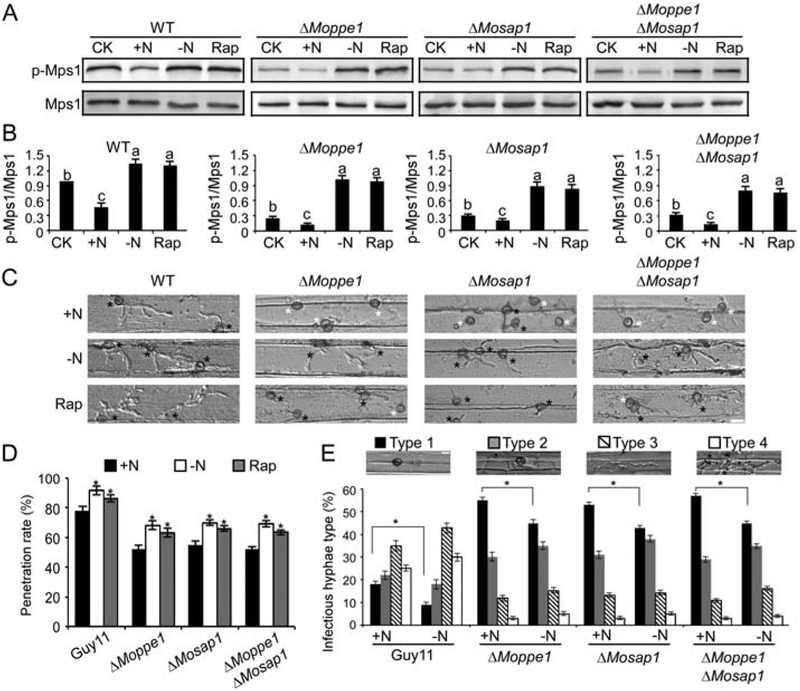Fig. 10.
Nitrogen limitation condition contributes to improve the MoMps1 phosphorylation level and enhances appressorium penetration. A. MoMps1 phosphorylation level test with different nutrient treatments for 4 h. MoMps1 phosphorylation levels were detected by Western blot analysis (+N: treated with 50 mM (NH4)2SO4;-N: with MM-N treat; Rap: 10 ng/ml rapamycin). B. The ratio of phosphorylated MoMps1/endogenous MoMps1 in different strains with different treatments. Three independent experiments were repeated. Values on the bars followed by the same letter are not significantly different (p < 0.05). C. Disease symptoms on the back of detached barley that were drop-inoculated with conidial suspensions and examined at 24 hpi. Bar = 10 μm. Black asterisks donate appressorium which has penetrated with invasive hyphae, asterisks in white represent appressoria with no penetration. D. Penetration rates of the appressoria on the back of detached barley with different treatment assays observed at 24 hpi, for each sample, (+N) treatment, another the spores treated with (–N) treatment appressorium penetration sites (n = 100) error bars represent the standard deviations. Asterisks indicate significant differences at (p < 0.05). E. Statistics of different types of infectious hyphae in rice cells one group with (+N) treatment, another the spores treated with (–N) treatment. n = 50. Error bars represent the standard deviations. Classification criteria were same as Fig. 2C. Asterisks indicate significant differences at (p < 0.01). Statistics were calculated from three repeated.

